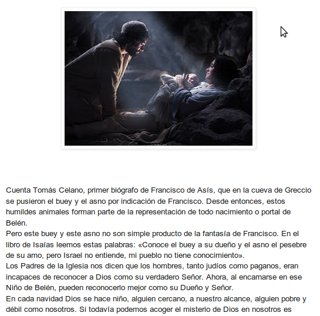
Este es un conjunto de programas, más elaborados que OpenOffice, y compatibles con Word, Excel y Power Point de Microsoft. Esta “suite” está disponible y gratuita hasta el 31 de diciembre de 2010.
Click!
Are Space Circles Proof of a Pre-Big Bang Universe?
Space Circles Are “Perfectly Normal”
None of the challengers doubt the existence of the CMB rings: “We confirmed that they were there,” said the University of British Columbia’s Zibin, who is a co-author of another one of the rebuttal papers.
“We could see exactly the signals that they described. So that part isn’t in question. … Where we differ is in our interpretation of the significance the signals.”
Instead, all three papers note that Penrose’s cyclic model doesn’t include a process called inflation.
The inflationary theory says that the early universe went through a period of hyperexpansion that helped it reach its current size and shape. Inflation helps solve a number of problems with the big bang theory, some of which were revealed by studies of the CMB.
For example, one potentially puzzling aspect of our universe is that it appears to be homogeneous—that is, when viewed on the large scale of galaxy clusters, different parts of the universe look essentially the same.
Inflation explains the universe’s uniformity, because any clumping of matter in the early universe was smoothed out by hyperexpansion.
However, according to Penrose, if an earlier universe existed before our own, and that universe expanded at an accelerated rate the same way ours is doing now, inflation is not needed.
The idea is that “the accelerated expansion in the previous aeon smoothed the universe out, and that takes the place of inflation in the standard picture,” Zibin said.
(Also see “Time Will End in Five Billion Years, Physicists Predict.”)
Each of the rebuttal papers describes the results of computer models that simulate hundreds of CMB skies resembling the actual radiation pattern found in our universe. Each simulation used inflationary theory as its foundation.
If the ripples in the CMB are evidence of the cyclic model of the universe, then the ripples should not be present in the simulated CMB skies because, according to Penrose, they should not appear in an inflationary universe.
But the rings do show up in the simulations.
“We looked for these patterns, and we could see exactly the same kinds of patterns. We could see similar numbers of them, with similar shapes and sizes,” Zibin said. “If [Penrose] wants to argue that this cyclic model is the correct one, he has to find some signature that would distinguish between his model and inflation. These rings are not that signature.”
CITA’s Hajian agreed: “The circles are not anomalous in any way. They are perfectly normal, and [our models] show that they can happen in a universe that is consistent with inflationary theory.”
Instead of evidence for previous universes, the rings could be a kind of optical illusion created by natural variations in the CMB, Zibin added.
“If you look hard enough, you can find all sorts of things” in the CMB, he said. “That’s one of the lessons of this, I think.”
La Fuente que Mana

Blog del P. Eusebio Gómez. Click!
